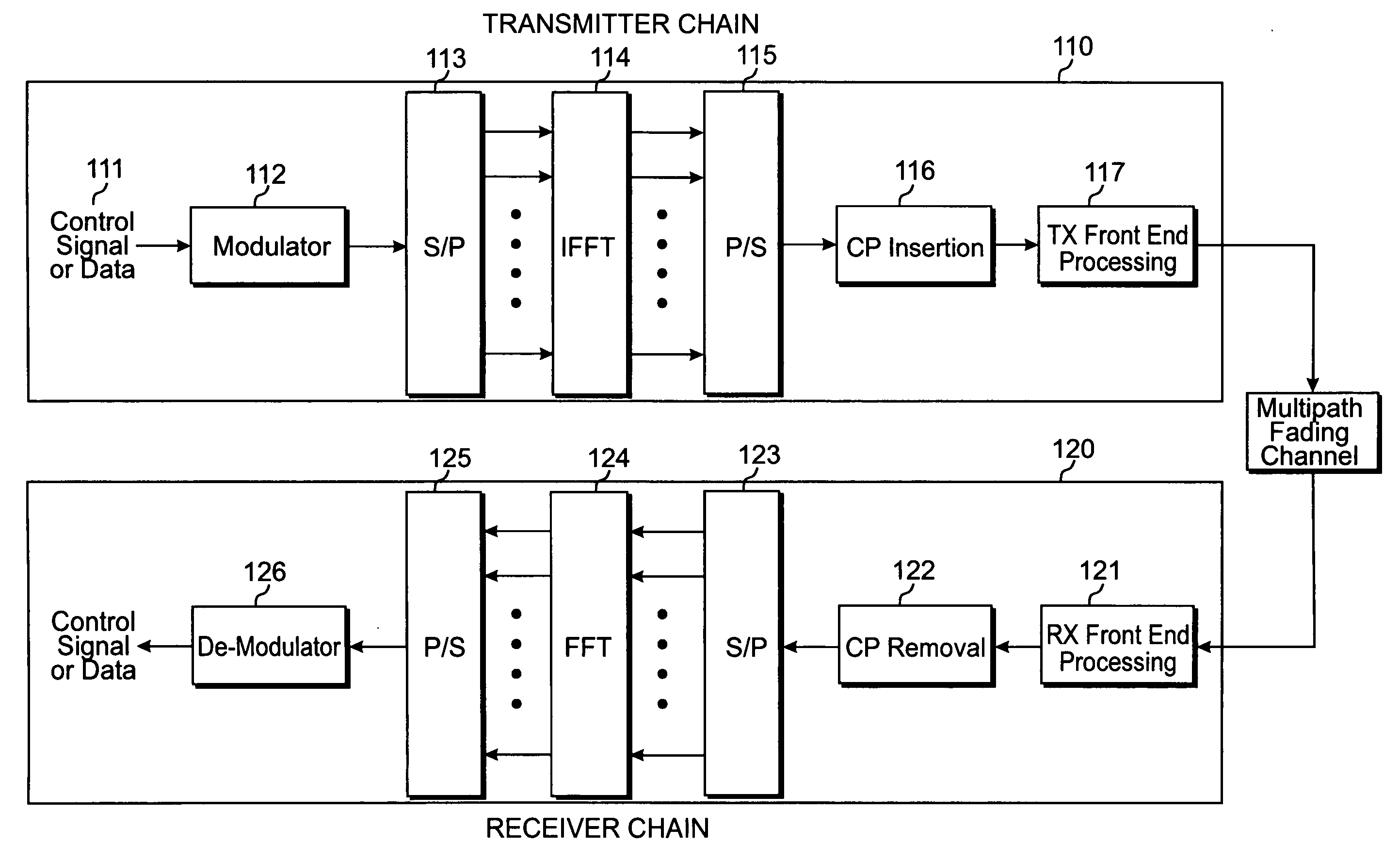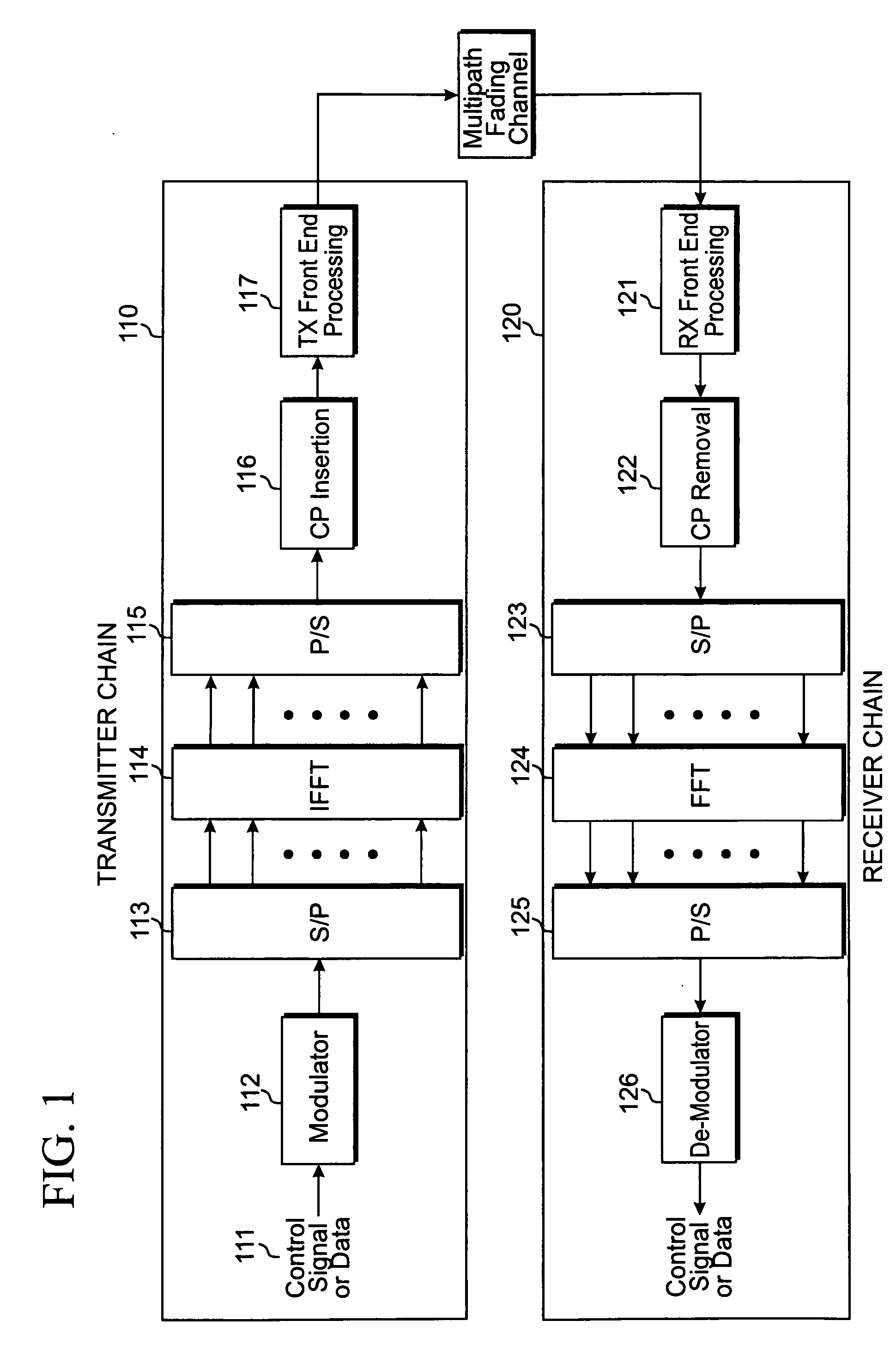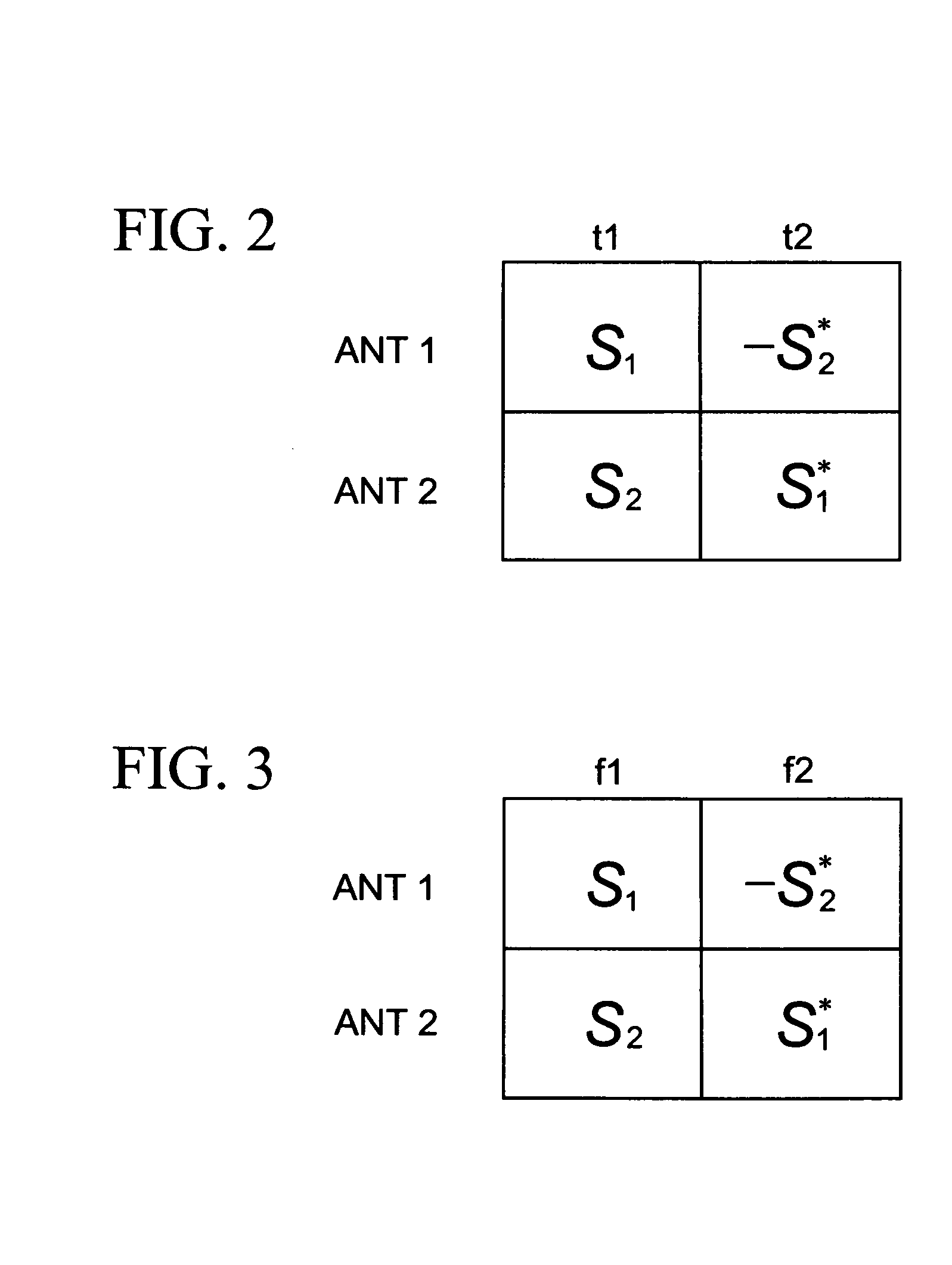Antenna mapping in a MIMO wireless communication system
a wireless communication system and antenna mapping technology, applied in the direction of channel coding adaptation, code conversion, code conversion, etc., can solve the problems of small changes in differential propagation delay, large changes in individual wave phases, and the scheme cannot be applied to two transmission antennas. achieve the effect of improving transmission diversity performance, improving transmission performance, and increasing system throughpu
- Summary
- Abstract
- Description
- Claims
- Application Information
AI Technical Summary
Benefits of technology
Problems solved by technology
Method used
Image
Examples
first embodiment
[0066]In a first embodiment according to the principles of the present invention, we describe an open-loop transmit diversity scheme where symbols S1 and S2 are transmitted via antennas ports ANTP0 and ANTP2 as shown in FIG. 5, while symbols S3 and S4 are transmitted over antenna ports ANTP1 and ANTP3, as shown in FIG. 5. The transmit matrix is given as:
[T11T12T13T14T21T22T23T24T31T32T33T34T41T42T43T44]=[S1-S2*0000S3-S4*S2S1*0000S4S3*](21)
where Tij represents symbol transmitted on the ith antenna port and the jth subcarrier or jth time slot, and i=1,2,3,4, j=1,2,3,4 for the case of four transmission antennas.
[0067]The received symbol estimates are given as:
s^1=h1*r1+h3r2*=(h12+h32)s1+h1*n1+h3n2*s^2=h3*r1+h1r2*=(h12+h32)s2+h3*n1+h1n2*s^3=h2*r3+h4r4*=(h22+h42)s3+h2*n3+h4n4*s^4=h4*r3+h2r4*=(h22+h42)s4+h4*n3+h2n4*(22)
where h1, h2, h3, h4 denote channel gains from antenna ports 0, 1, 2 and 3 respectively; n1, n2, n3, and n4 represents noise for sub-carriers 1, 2, 3, and 4 in the case of ...
second embodiment
[0069]In a second embodiment according to the principles of the present invention, reference symbols for the four transmission antennas are mapped as shown in FIG. 10. Reference signals R0, R1, R2 and R3 are mapped to physical antennas 1, 3, 2 and 4 respectively. In this case, each antenna port is defined by the reference signal transmitted on the port. That is, antenna port ANTP0 is defined by reference signal R0, antenna port ANTP1 is defined by reference signal R1, antenna port ANTP2 is defined by reference signal R2, and antenna port ANTP4 is defined by reference signal R4. Because reference signals R0, R1, R2 and R3 are mapped to physical antennas 1, 3, 2 and 4 respectively, antenna port ANTP0 corresponds to physical antenna 1, antenna port ANTP2 corresponds to physical antenna 2, antenna port ANTP 1 corresponds to physical antenna 3, antenna port ANTP3 corresponds to physical antenna 4. The large spacing between physical antenna 1 and physical antenna 3 assures that antenna po...
third embodiment
[0072]In a third embodiment according to the principles of the present invention shown in FIG. 11, CW1 is mapped to ANTP0 and ANTP1 while CW2 is mapped to ANTP2 and ANTP3 with antenna ports to physical antennas mapping as shown in FIG. 10. It can be seen that with this mapping of CW to antenna ports and the mapping of antenna ports to physical antenna mapping of FIG. 10, both codewords experience larger diversity compared to the case where ANTP0, ANTP1, ANTP2 and ANTP3 are mapped to physical antennas 1, 2, 3 and 4 respectively.
PUM
 Login to View More
Login to View More Abstract
Description
Claims
Application Information
 Login to View More
Login to View More - R&D
- Intellectual Property
- Life Sciences
- Materials
- Tech Scout
- Unparalleled Data Quality
- Higher Quality Content
- 60% Fewer Hallucinations
Browse by: Latest US Patents, China's latest patents, Technical Efficacy Thesaurus, Application Domain, Technology Topic, Popular Technical Reports.
© 2025 PatSnap. All rights reserved.Legal|Privacy policy|Modern Slavery Act Transparency Statement|Sitemap|About US| Contact US: help@patsnap.com



